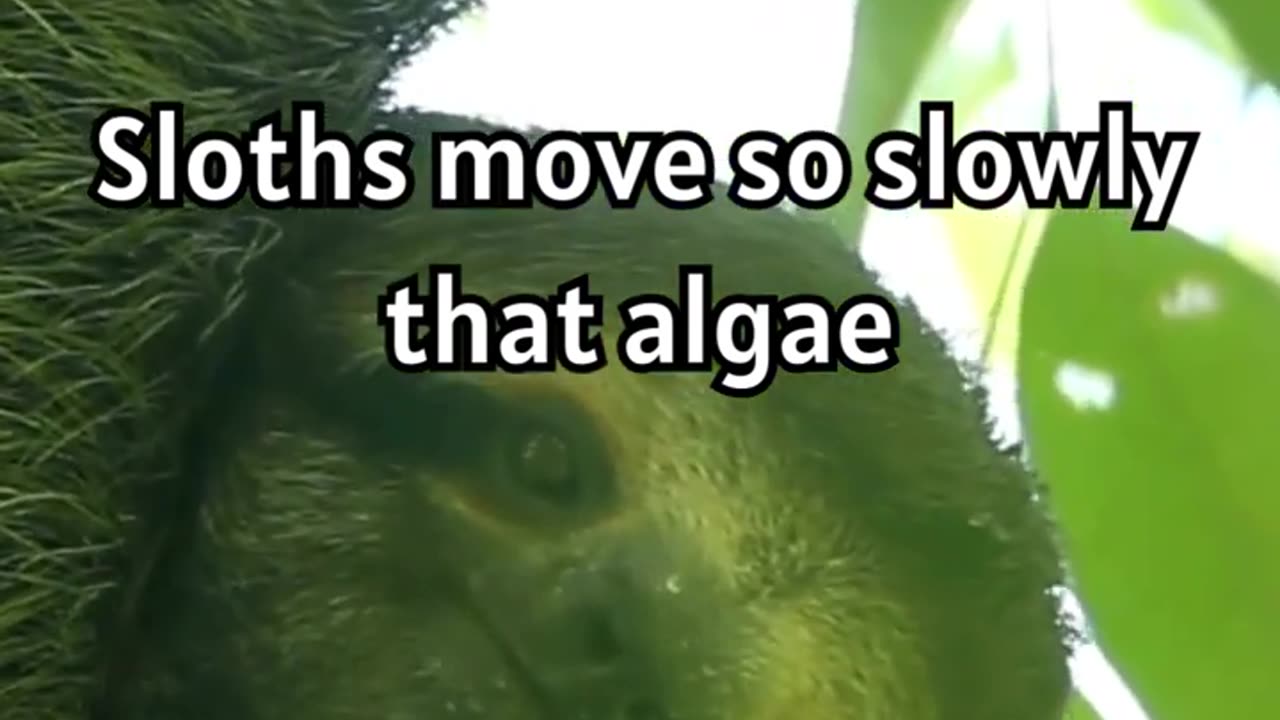Premium Only Content

The Amazing Adaptations of Sloths_ How Algae Camouflage Them in the Wild! 🌿
Sloths are fascinating creatures with a range of remarkable adaptations, and their relationship with algae is particularly intriguing. Here's how algae camouflage them in the wild:
1. **Slow Movement**: Sloths move slowly, often spending most of their time hanging upside down in trees. This slow movement helps promote the growth of algae on their fur, as the algae thrive in the warm, moist environment provided by the sloth's fur.
2. **Camouflage**: The greenish hue of the algae growing on a sloth's fur helps camouflage it in the lush green canopy of the rainforest. This camouflage provides them with a level of protection from predators, as they blend in seamlessly with their surroundings.
3. **Nutritional Benefit**: The algae growing on a sloth's fur not only provide camouflage but also may offer nutritional benefits. Sloths are known to occasionally lick their fur, ingesting the algae along with any other organisms that may be living there. This behavior could supplement their diet with essential nutrients.
4. **Thermal Regulation**: The thick fur of sloths, along with the algae growing on it, helps insulate them and regulate their body temperature in the fluctuating temperatures of the rainforest.
5. **Ecosystem Role**: The relationship between sloths and algae is an example of mutualism, where both parties benefit. The algae receive a habitat to grow and thrive, while the sloths gain camouflage and potentially nutritional benefits.
Overall, the symbiotic relationship between sloths and algae is a fascinating example of nature's adaptations and the interconnectedness of species within ecosystems.
-
 4:23
4:23
Blackstone Griddles
16 hours agoEasy Salmon Dinner on the Blackstone Griddle
27.3K1 -
 8:10
8:10
WhaddoYouMeme
1 day ago $0.06 earnedChristians, Before You See “Testament”, Watch this!
7.36K4 -
 8:42
8:42
Freedom Frontline
14 hours agoDurbin’s Trump Smear Video Just HUMILIATED Him in the Senate
9.21K4 -
 10:56
10:56
ariellescarcella
12 hours agoThe Shocking Divide Among College Voters Sparks Worry For America
7.57K6 -
 13:09
13:09
Forrest Galante
10 hours agoWildlife Expert Reacts To Deadly Australian Animal TikToks
53.5K7 -
 12:08
12:08
Zoufry
2 days agoThe Mystery of Gaddafi's Final 24 Hours
14.7K11 -
 18:25
18:25
Liberty Hangout
13 days agoAnti-Ice Demonstrators Love Poop!
52.4K71 -
 9:39
9:39
MattMorseTV
17 hours ago $1.14 earnedVance just DROPPED a BOMBSHELL.
45.8K65 -
 23:47
23:47
GritsGG
1 day agoThe Forgotten Best Sniper Support AR!
19.2K3 -
 1:15:48
1:15:48
The Pascal Show
18 hours ago $0.12 earnedMUGSHOTS RELEASED! Emmanuel Haro's Parents Mugshot Released To The Public
14.8K1